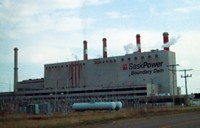Advertisement
Grab your lab coat. Let's get started
Welcome!
Welcome!
Create an account below to get 6 C&EN articles per month, receive newsletters and more - all free.
It seems this is your first time logging in online. Please enter the following information to continue.
As an ACS member you automatically get access to this site. All we need is few more details to create your reading experience.
Not you? Sign in with a different account.
Not you? Sign in with a different account.
ERROR 1
ERROR 1
ERROR 2
ERROR 2
ERROR 2
ERROR 2
ERROR 2
Password and Confirm password must match.
If you have an ACS member number, please enter it here so we can link this account to your membership. (optional)
ERROR 2
ACS values your privacy. By submitting your information, you are gaining access to C&EN and subscribing to our weekly newsletter. We use the information you provide to make your reading experience better, and we will never sell your data to third party members.
Environment
Desperate Cooling Measure Is Aired
Artificial injections of sulfur into the stratosphere would cool Earth, scientist suggests
by Ivan Amato
August 1, 2006
| A version of this story appeared in
Volume 84, Issue 32

The world might need to radically combat global warming by deliberately injecting a small volcanic eruption's worth of planet-cooling sulfur into the stratosphere. That's the talked-about proposal being set forth in a controversial essay by Nobel Prize-winning chemist Paul J. Crutzen, which appears in the August issue of the journal Climatic Change (DOI: 10.1007/s10584-006-9101-y).
The journal's editor, climatologist Stephen H. Schneider of Stanford University, says scientists and politicians "must study the potential" of geoengineering-based strategies such as the global-scale cooling experiment that Crutzen, of Max Planck Institute for Chemistry, in Mainz, Germany, outlines in his essay. However, Schneider stresses that considering such drastic measures to mitigate global warming should in no way reduce a sense of urgency for safer solutions, including more energy-frugal lifestyles and helping the developing world leapfrog over the carbon dioxide-emitting adventure of the Industrial Revolution.
In his essay, Crutzen explains that global warming from the buildup of carbon dioxide and other greenhouse gases is partially countered by a cooling effect due to backscattering of sunlight by aerosols that form from sulfate particles. In this way, even the sulfurous pollution that has caused acid rain, now on a decline, has had a cooling effect.
The 1991 eruption of Mount Pinatubo in the Philippines provides a dramatic natural example of the power of aerosol cooling. Six months after the eruption, Crutzen notes, about 6 billion kg of sulfur (from the volcano's initial injection of 10 billion kg) in the form of aerosol-forming sulfate remained in the stratosphere. The result of this event was a 0.5 ??C cooling at Earth's surface in the year following the eruption.
It would take about 5.3 billion kg of sulfur introduced into the stratosphere per year to compensate for a doubling of atmospheric carbon dioxide levels, Crutzen says. Increasing the amount of sulfate aerosols "can be achieved by burning S2 or [by] H2S carried into the stratosphere on balloons and by artillery guns to produce SO2," he suggests in his essay. Perhaps a chemist could develop a sulfur-containing gas that is stable lower in the atmosphere, where it would be easier to place, but which then would undergo a reaction in the stratosphere to produce SO2 or another sulfur-containing gas that can produce aerosol-forming H2SO4, Crutzen asks as a prod to his chemist colleagues.
Crutzen describes his climate engineering proposal as a last-resort hedge on what he fears will become a too-little-too-late response to global warming. "I am only in favor of doing the manipulation if there are no severe side effects and the climate is running away," Crutzen tells C&EN. For now, he says, "I recommend research."
In recognition of the controversial nature of Crutzen's ideas, Climatic Change commissioned a half-dozen articles to help readers develop a fuller perspective of the pros, cons, and uncertainties, Schneider says.
Climate modeler Gavin Schmidt of NASA's Goddard Institute for Space Studies in New York City views Crutzen's essay as a strong but prudent call to other scientists to engage in "what if" scenarios, including the worst cases. "I am not as pessimistic as Crutzen," Gavin says. There's a chance the world will take steps that will make geoengineering experiments unnecessary, he says, a result that Crutzen rates as "a pious wish."





Join the conversation
Contact the reporter
Submit a Letter to the Editor for publication
Engage with us on Twitter